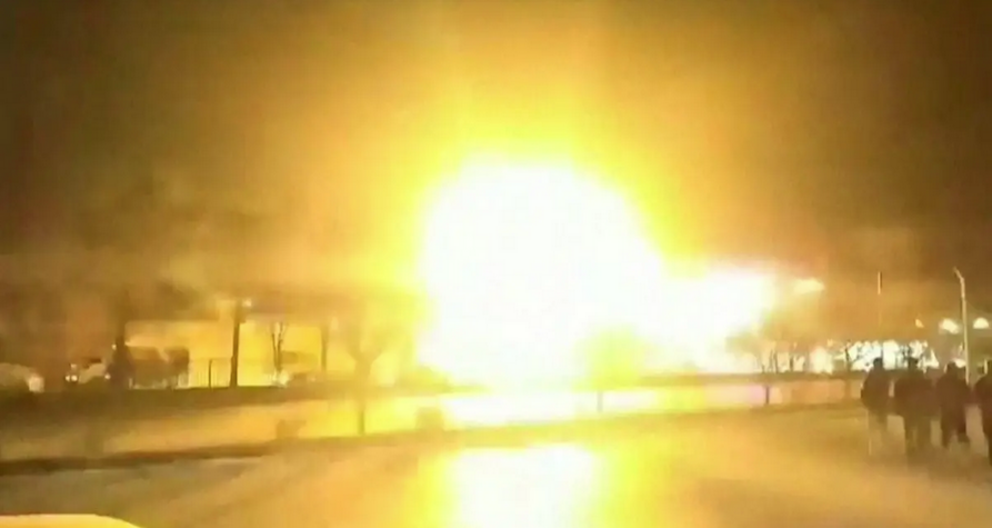Israel illegally attacks Iran and Iraq with drone strikes
At least three separate aerial bombardments in Iran and Syria/Iraq were attributed to Israel between Sunday and Monday, the most notable being a drone attack against targets in the Iranian city of Isfahan on Sunday morning. The attacks have now sparked fear of a retaliation by Tehran, causing Israel to position its air defenses in the occupied Golan heights area, where Tel Aviv speculates Iran may fire missiles.
Whilst the Israeli government constantly warns of the Islamic Republic of Iran’s aggressive behavior, it has taken the first step to expand a silent war — primarily consisting of sabotage and operations in the seas, from both sides — into what could quickly descend into a hot war. Israel’s new far-right government, headed by Prime Minister Benjamin Netanyahu, set out one of its primary objectives as confronting Iran. Various indications that Israel has been serious about carrying out military operations against Iran have emerged in the past years, with Tel Aviv vowing to draft plans to strike Iran and destroy its nuclear program.
In the earlier hours of Sunday morning, Iran announced that three “Micro Aerial Vehicles” (MAV)’s had launched an unsuccessful attack against a military facility in the city of Isfahan, connected to the ministry of defense. The MAV drones only inflicted minor damage to the facility, after Iranian air defense fire shot down one of the projectiles and the other two were caught in a defensive trap. Iran had built a protective roof around the facility, seemingly prepared to counter drone attacks, making the potentially lethal attack ineffective.
The Wall Street Journal later released a report, citing unnamed US officials, claiming that the Israeli Mossad were behind the attack, a conclusion that was eventually also reached after an Iranian investigation into the attack. It is still unclear, however, where exactly these drones were manufactured and what the launch site was, but according to the size and type of munitions used, it can be concluded that they were launched from within Iranian territory.
Less than 24 hours later, Israeli drone strikes were also launched against an aid convoy of 25 trucks that were on the way to cross the Iraq-Syria border in the Abu-Kamal area. Three of the trucks were reportedly destroyed, along with their cargo and conflicting reports were later released on the total extent of the damage and casualties. Whilst local media and the likes of Al-Mayadeen TV reported that there had been no deaths as a result of the attack, others reported a number of casualties. The claims of 10 Iran-backed militia member casualties, connected to the Iraqi Hashd al-Shaabi, stemmed from a report from the UK-based ‘Syrian Observatory for Human Rights’ (SOHR), which has been routinely called out for making up figures out of thin air. At this point the SOHR cannot be taken as a serious source and so, without any further evidence, there is currently no proof of casualties in this attack.
Airstrikes were then also allegedly launched against two other locations in Eastern Syria’s Deir Ezzor province and are said to have targeted a tanker in the town of Al-Suwayyah and also a base belonging to militia groups that are aligned with the Islamic Revolutionary Guard Corps (IRGC), however, the evidence for exactly what happened in both these attacks is minimal. Israeli media claims that what were believed to have been Israel’s strikes were targeting weapons and not the food aid which was said to have been what was being transported. In the case of the attack on Iran, the Israeli and Western media are attempting to frame the attack — which is a violation of Iranian sovereignty and an act of war — as targeting ballistic missile production facilities, that according to the US-Israeli popular conspiracy theory, are part of the non-existent nuclear weapons program of Iran.
In order to demonstrate this display of force, Israel may potentially risk opening up a regional war. Iran has indicated that it will take revenge for the attack, despite its failure to do any significant damage, and this has driven Tel Aviv to ready its military and set up air defenses. The Iranian defense ministry also issued a statement in which they claimed they were ready to defend their country through their own domestically developed air defense systems, which could indicate that Tehran are expecting another round of attacks against the country.
Last March, following the murder of a number of Iranian IRGC officers by an Israeli airstrike in Syria, Iran responded by using ballistic missiles to blow up a “strategic centre” for the Israeli Mossad, formerly located in Erbil (north Iraq). This response indicated that Iran was willing to step up the pressure and to respond using a tit-for-tat model. US Secretary of State, Antony Blinken, recently made threatening statements towards Iran, visiting the Israeli government on a brief Middle East visit, after the CIA director had also made a visit. Instead of working to de-escalate tensions, it is clear that the US government is seeking to do the very opposite and is instead working to antagonize it. If this policy of slowly raising the severity of the attacks against Iran is to continue, it will take only one wrong move to plunge the entire region into a war, in which Israel will be the primary target.

